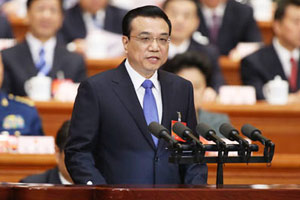 Large Medium Small
Large Medium SmallThirdly, the proportion of China's GDP contributed by the tertiary industry surpassed that of the secondary industry for the first time in 2013, causing essential changes to the country's industrial structure.
The government work report said the country would give high priority to developing production-oriented service industries, and carry out pilot and demonstration projects to advance the comprehensive reform of the service industry.
Meanwhile, the government will also strive to integrate the development of cultural and creative industries as well as design services with related industries, and speed up the development of insurance, business and science and technology services.
Nicholas Lardy, a senior fellow at the Washington-based Peterson Institute for International Economics, said the service sector would become more important in the future. He predicted the proportion of the service sector to China's GDP would reach 50-55 percent in the coming five to 10 years.
Fourthly, the government has made tremendous efforts in deepening reform of the administrative system with an aim to ensure the market plays the decisive role in allocating resources and the government better plays its role.
The work report said that, in 2014, the government would cancel or delegate to lower-level governments an additional 200-plus items requiring State Council review and approval.
Fifthly, China became the world's largest goods trading nation for the first time in 2013, when its annual trade in goods passed the 4-trillion-U.S.-dollar-mark, and its commodity structure of international trade was also being steadily optimized.
The government work report showed China's total imports and exports are projected to grow at about 7.5 percent this year.
 |
 |